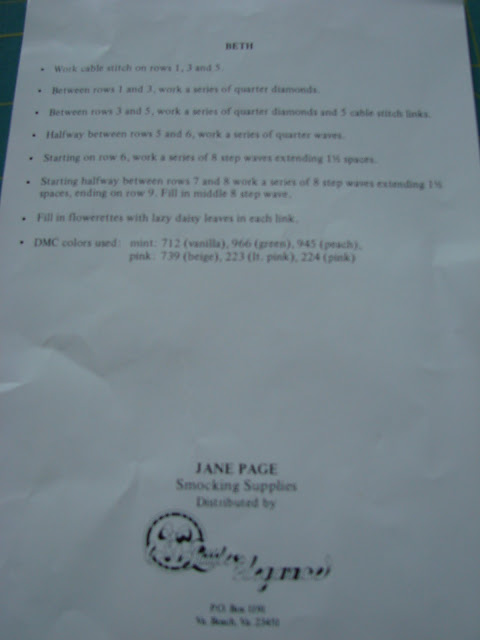This is the second of a three part post. I just felt that there were too many pictures to put on this post at one time.
Now that the front smocked skirt is attached to the front yoke, it is time to cut the pleating threads. If the threads are cut before the smocked skirt is attached to the yoke, the pleats will relax and will be very difficult to attach. The pleats won't stay taught, they will go to the left and the right and won't look nice.
Pulling out the threads is exciting because you can see what the smocking really looks like!
It is time to attach the front yoke lining. I pin it down on the back with my "extra fine" needles that I love so much.
I handstitch the lining to the front skirt using a blind stitch.
The piping is lined up along the top row of the smocking, perfect!
Notice how the yoke in the front is high and the bodice in the back is low? Well, the dress pattern tells you exactly how many rows to smock according to the size. The bottom of the smocking matches the bottom of the back bodice. There is an option to smock the back of the dress also. In that case, you would use a high yoke in the back instead of a low bodice.
Now I machine baste the two layers of fabric together around the armhole.
The next step is to attach the sashes to the side seams. The bottom of the sash should be touching the seam that joins the back bodice to the skirt. The top of the sash should be just the seam allowance under the armhole. The seam allowance is 5/8". I form a pleat in the sash facing downward so that the sash fits. It also gives the sash a nicer look.
I always sew a french seam when I am sewing this dress pattern. It encloses the seam and is so easy to do. It does take an extra step though. I sew the side seams wrong sides together, with a l/4" seam. It looks like the seam will show on the right side of the dress. I trim the seam to 1/8" and press it to the side.
Then I turn the dress so that the right sides are together. I pin the side seam again, and sew a 3/8" seam.
Press and you have a french seam, as easy as that!














































